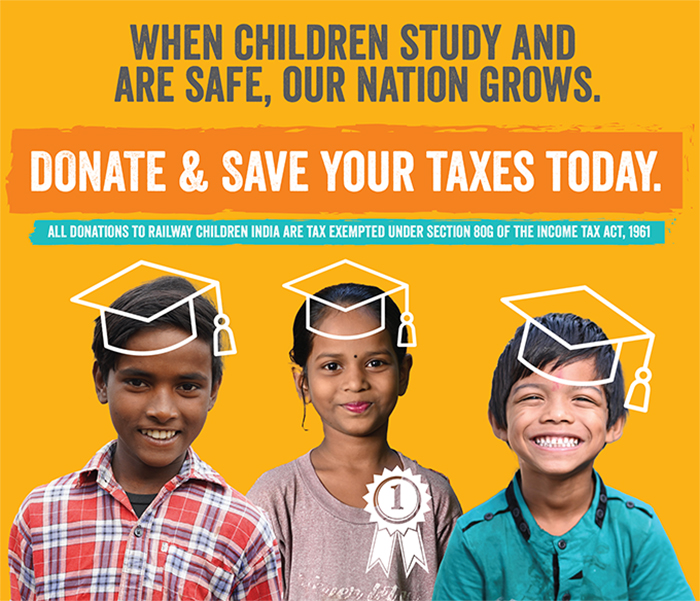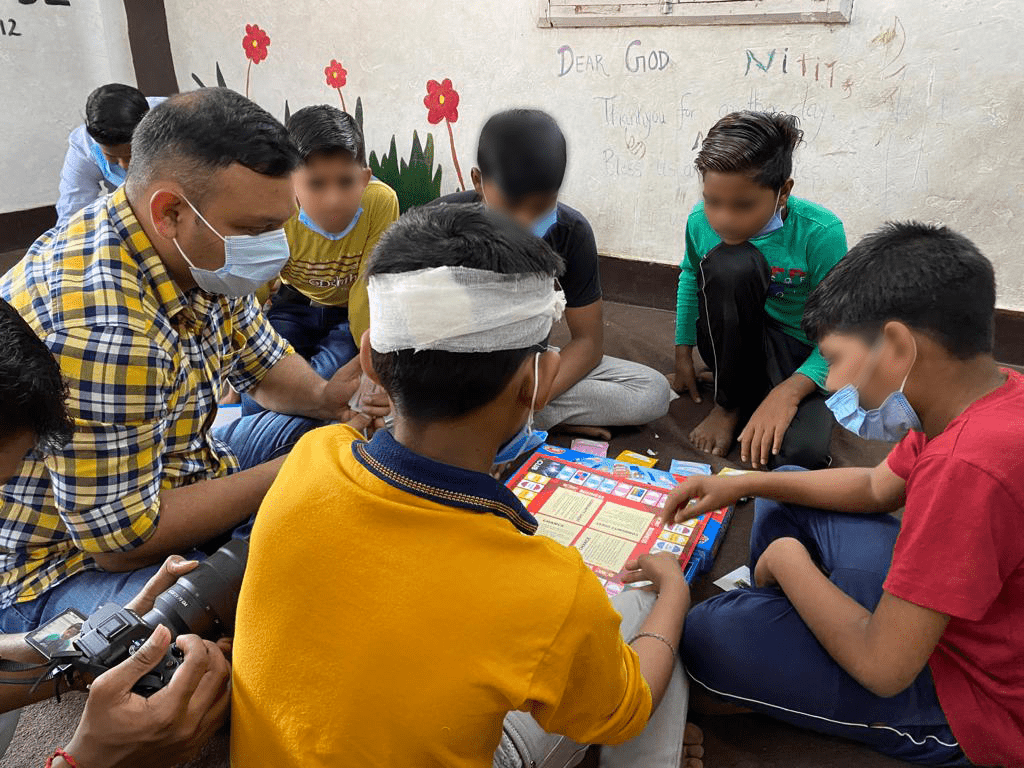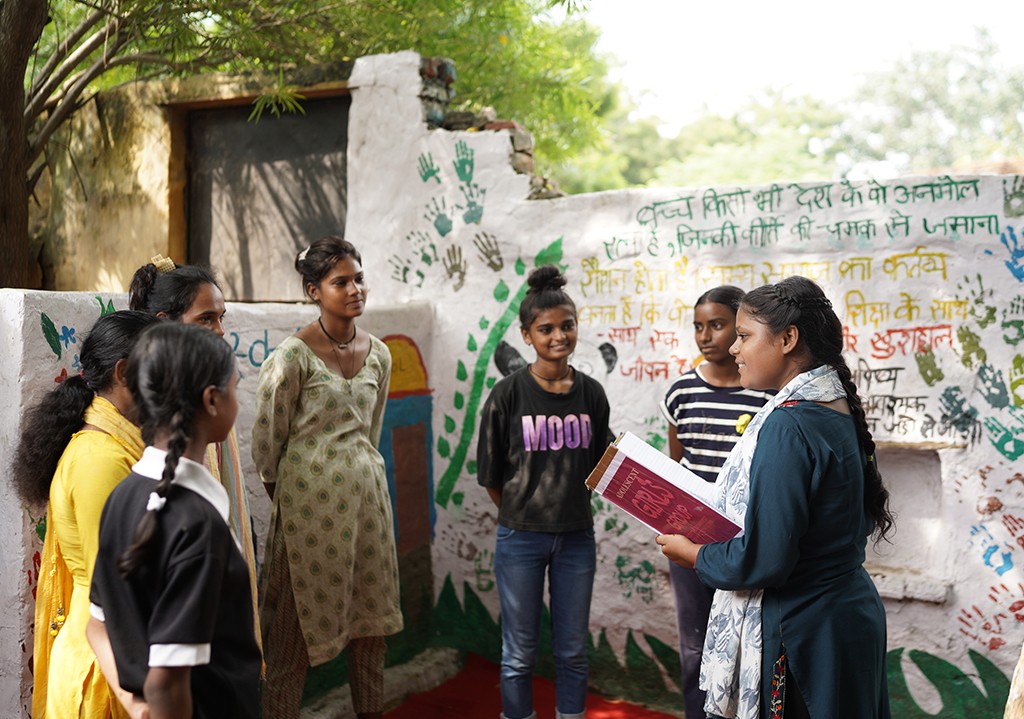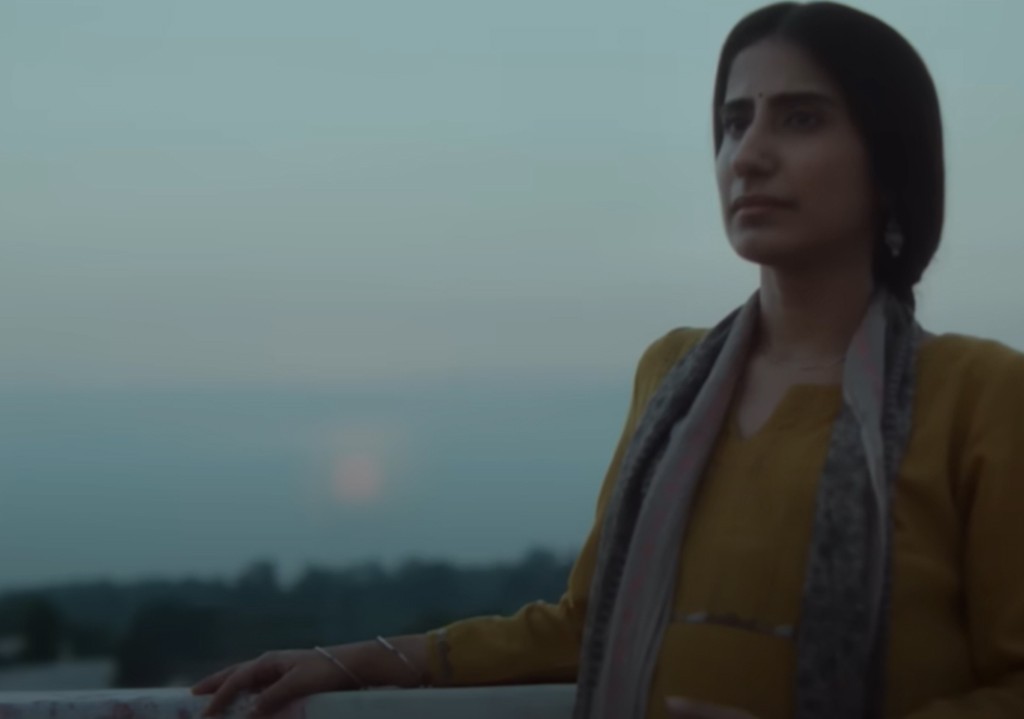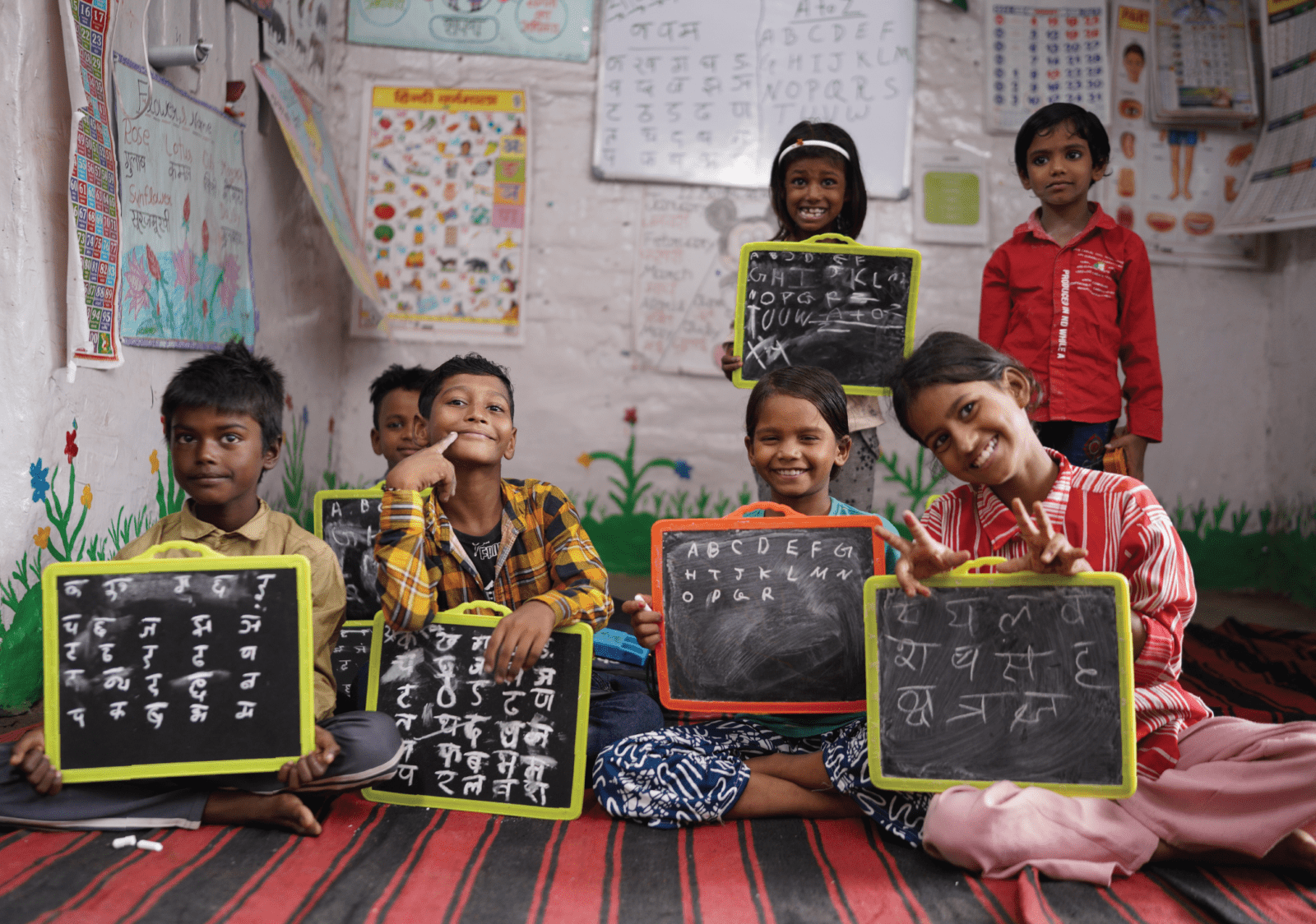Navin Sellaraju, Director & CEO, Railway Children India, interacts with children rescued from Ghaziabad railway station.
Unsafe migration across India’s sprawling rail and transport network is a crucial factor that contributes to various incidents of child rights violations, abuse and crimes against children. For over two decades, Railway Children India (RCI) has implemented multi-pronged programmes in curbing the menace at its cause, by striving to make railway stations a child-friendly place. With the Howrah-Delhi Network Project, however, we aim to transform the mechanism of child protection with the help of a strong and efficient system—an unwavering collaboration between railway personnel, district officials and Railway Children India.
Here is an interview with Navin Sellaraju Sukumar, Director & CEO – RCI, sharing with us the inspiration, implementation and impact of the newly launched Howrah-Delhi Network Project, in an aim to reach and protect every child that traverses through the transport network.
Transforming the Howrah-Delhi railway network is an ambitious project that seeks to change one of India’s prominent rail networks into a child friendly one. What pivoted Railway Children India (RCI) towards this new strategy and scale up?
Railway Children India’s (RCI’s) vision has always been to work towards a world where no child has to ever live on the street; our strategy has therefore been preventive, focusing on how we can prevent children from slipping into a life on the streets.
In the Indian context, the railway network happens to a place where a large number of children migrate unsafely. If we protect children here, at the source – at the railway station, we will potentially stop them from slipping into a life on the street. Backed with years of experience and understanding, since 1996, we have worked across 35 railway stations across the country, protecting more than 1,00,000 children.
With the onset of the pandemic in 2021-2022, circumstances around India and the world changed, changing how childhoods would be impacted for years to come. This posed a question before us.How could we scale the impact of our work and protect lakhs of children in a sustainable way? On multiple baseline studies backed by our collective knowledge and expertise of working with the railway network, we were pointed towards the Delhi-Howrah railway network for multiple reasons.
A 1900 km network, with more than 400 railway stations and 64 major junctions, cutting across 5 major states of the country, and data reflecting high instances of unsafe migrations, it almost seemed like this is where we needed to be. Working across 400 stations, would take years and didn’t seem sustainable or viable both financially and practically. So how else would we do it?
On undertaking a deep dive, we were able to understand and uncover the mechanisms and people who could play a critical role in create a safety net for children. Whether children travelled in a moving train or arrived at a station that lacks a dedicated NGO team, this meant that children could be protected anywhere across the network – if there were people to protect them.
How do you envision an ideal, child-friendly railway station or bus stop? What features would make it child-friendly?
When we talk about protecting children, one must know that no abstract network or system protects children; people do. In RCI’s child-friendly network model, the primary emphasis is on sensitizing and training railway officials across this network. This includes everyone from the Railway Protection Force (RPF), ticket collectors to the cleaning staff, so that they’re able to identify children at risk anywhere across this network. Upon identification, it becomes as key to be able to know what to do to place the child in safety.
A whole lot rests on the knowledge, intent and willingness of these stakeholders to want to play a role in protecting children, and our relationship with the Indian Railways has always bolstered our confidence in this aspect. Training a cohort of sensitized, aware and active railway stakeholders has been the first step in our efforts to build child-friendly railway stations. In fact, stakeholders have already started identifying and protecting children in moving trains and at railway stations where no NGO teams are present.
The second element comes to play after the children have been protected when they need to be moved to a safe space. The District Child Protection Unit (DCPU) is responsible for this movement to a safe place. The exact spot where a child is rescued invariably lies in a particular district. The idea is, therefore, to prepare all the districts that fall within this network. For example, the Delhi-Howrah network crosses 34 districts. If we prepare the DCPUs in each of these 34 districts, the moment railway officials rescue a child, an active DCPU, which is aware of such calls and references, will be prepared to respond efficiently. They will then promptly move the child to a safe space, produce them before a Child Welfare Committee (CWC), take them to a childcare institution (CCI), and then ultimately reunite the child with their family. In addition to the DCPU, we will also prepare any civil society or child helpline that is working in these areas to respond to the calls of railway officials.
When railway officials and district officials across these 34 districts begin to engage with each other, interact, refer, and move children to a safe space, this leads to the eventuality – a safe and robust child protection net, right from Delhi to Howrah and back. Our goal, therefore, is to demonstrate that a child at risk across this network will be protected by an coordinated effort that will see child protection stakeholders converging, and collaborating to ensure a child is safe, protected, and reunited with their family (or child care institutions/ alternate family based care in the event that family is not the best option).
RCI’s ‘Theory of change’ puts a great emphasis on multi-stakeholder collaboration to protect children at risk across transport hubs. Please share more about RCI’s collaboration with the Indian Railways and railway personnel across railway stations, bus stops, and the central role of the District Child Protection Unit (DCPU).
Appointed the key resource agency on child protection by the Indian Railways, we have co-creating Standard Operating Procedures (SoPs) to build more than 140 child-friendly railway stations and a community of 46000+ child protection champions across in India. Therefore, we have already started training railway officials at training institutes, which lie across the Delhi-Howrah network at the station level, institute level and the division level. We initiated this training last year, and have trained 4500 officials so far, who have already protected 1500 children across this network. At the railway-system level, this process has rolled out too.
At the district level, we plan to engage with the District Magistrates (DMs), who is the key custodian of protection for all children. All child protection systems and people are governed under the ambit of the DM. Therefore, bringing them up to speed, informing them of the work being done at the station level, and bringing them on board to engage with the Child Welfare Committees (CWC), the District Child Protection Units (DCPU) and other systems so that they are prepared to respond to calls and set up a response protocol. This protocol will vary from district to district, based on the context. Primarily, however, it is about how quickly at least one mechanism within the district can respond to the railway officials when they protect children.
The third key element in building a robust ecosystem is identifying and training ‘fellows’ across the 34 districts. Under our Child Protection Fellowship Program, we will carefully select and provide opportunities to young people who will undertake a two-year fellowship program. This program prepares them to support the district authorities in the process of getting referrals from the railways, reuniting and restoring the child with their family, following-up and making sure the child continues to stay within a nurturing family environment.
In a scalable and sustainable model, ‘Fellows’ are an essential component of its success. These passionate, conscious community citizens facilitate this coordinated effort, to converge the efforts of all the key players across locations, to protect children.
For those from the audience who don’t know, do share with us the process that ensues after a vulnerable child has been identified, until he/she is safe, protected and reunited with family. What are the gaps that RCI is trying to bridge in this process?
The first and primary gap that we want to address is that railway personnel are able to identity at-risk children, be more vigilant and are able to bring more vulnerable children within the safety net.
The second is gap is that when a child is identified at station A, for example, or maybe in a moving train, the child is made to travel to the next station that has an active child protection system. This next station can sometimes be in a different state. This can cause challenges and hurdles in creating and providing an immediate safe space for children. To put this into perspective, between Delhi to Howrah comprising 64 major junctions only 13 railway stations have a child protection mechanism.
The difference with the Delhi – Howrah network transformation is that the next station will be equipped and prepared to receive the child. It will have a designated person to whom the child will be handed over and from whom the respective district mechanism can take over. Wherever a child is found, a nominated, sensitive officer at the next closest station will immediately refer the child to the DM and start a cycle of action and form the safety net. Thereafter, when the child is referred to a CCI, we want to make sure the child does not stay in the institution for an unnecessarily long period; rather, their family should be traced, and they should be reunited with the family at the earliest.
The ‘Fellow’ will oversee this process, keeping a count of how many children are protected and how many are still staying at the CCI, the progress of the restoration process—essentially, facilitating the movement of children and maintaining the momentum of the process.
What will be the impact of Delhi-Howrah network project and how do you envision that it will act as a powerful advocacy tool for building child-friendly transport models across India?
Our impact will be at 2 levels. First children will be safe and protected across the network. According to our secondary data assessment—which has been developed through interactions with the RPF and railway officials—there are close to 20,000 children migrating unsafely every year, and only 10% of them are being protected.
By the end of five years, i.e., by 2027, we see the planned system protecting at least 20,000 children, if not more, every year.
The second is demonstrating the system of railway stations and district authorities working in tandem with minimum NGO dependence, as a model that the government can replicate across other networks. If this model is implemented across all the railway stations and their respective districts, the entire railway network and districts can together create a safety net across the nation for children.


